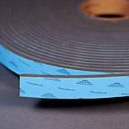Polyurethane Adhesives: What’s in the Formula and What Makes it Strong?
- 11 August 2017
- Posted by: Madhuraka
- Category: Article
 A capable adhesive is composed of countless chain links. Suspended inside the liquid bulk, those bonding linkages are usually formulated from urethane polymers. Having said that, this formula isn’t fixed, it varies according to the product’s desired bonding specifications. Consequently, those urethane units are sometimes replaced by other forms of carbamate. Presumably, then, there’s an extraordinary variance factor occupying the polyurethane adhesive product range.
A capable adhesive is composed of countless chain links. Suspended inside the liquid bulk, those bonding linkages are usually formulated from urethane polymers. Having said that, this formula isn’t fixed, it varies according to the product’s desired bonding specifications. Consequently, those urethane units are sometimes replaced by other forms of carbamate. Presumably, then, there’s an extraordinary variance factor occupying the polyurethane adhesive product range.
Urethane Building Blocks
Composed of ethyl carbamate or a purer carbamate compound, urethane products are known to be fine sealants and impact-resistant coatings. When polymerized, these urethanes couple and cross-connected. Polyurethane plastics are manufactured in this manner, with a linear structure that repeats the polycarbamate backbone. Like an amorphous scaffolding frame, at least until the formula cures, the urethane linkages are versatile plastics, not adhesives. Where’s the threshold point in the process where this plastic is transformed into a high-functioning polyurethane adhesive?
Imbued with Adhesive Credentials
If the figurative backbone of this plastic compound is composed of small urethane units, then the outlying side groups in the formula would be the ribs of this versatile polymer. It’s here and in the primary linear structure that special stickiness additives are chemically injected into the compound chains. They alter the tackiness of the glue, gift it with its hardening attributes, and generally determine the adhesive characteristics of the product. Basically, the added isocyanate units and polymer curing agents are triggered by time or some other reactive element, at which point the elastomeric segments and tacky side group units’ crosslink until the applied adhesive hardens.
Adaptable Component Curing
Moving further into this chemical field, an enhanced compound morphology enables more tailored characteristics. Thermosetting variants rule the roost here, but thermoplastic products are available. The versatile carbamate structure and its side group substructure make this adaptability feature readily accessible during the formulation stage, so designer adhesives are a distinct reality here. Again, because of open structure programmability, numerous elastic and rigidity states are possible when the formula is altered by an industry expert. Likewise, the curing mechanism varies significantly when the process requires a product with a tailored hardening feature.
Like an infinitely adaptable skeleton, the properties of an expertly formulated polyurethane adhesive dances to the tune orchestrated by a product manufacturer. That chemical engineer uses the building blocks of the urethane units to build a barebones framework, a linear polymer backbone that partners equitably with numerous resins, hardeners, and plasticisers to create bonding families, polyurethane adhesives that can stick anything to anything else with incredible chemical anchoring power.

